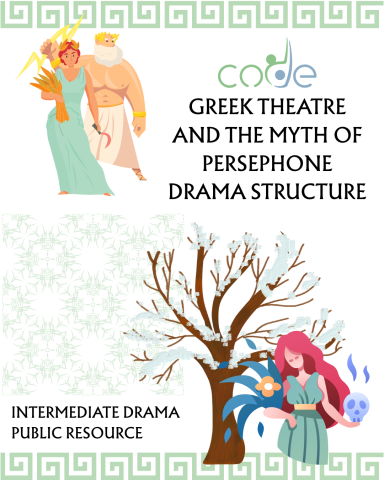Abstract:
Students learn about the history of Greek theatre, with specific focus on the conventions of the Greek chorus, ritual and choral speaking. Using many of these techniques, students explore the story of Persephone, who was kidnapped from her parents Zeus and Demeter by Hades and taken to the Underworld to be his wife. Students learn and use various dramatic forms such as Tableaux, Thought-tracking and Choral Speaking and use these devices in telling their own myths.

